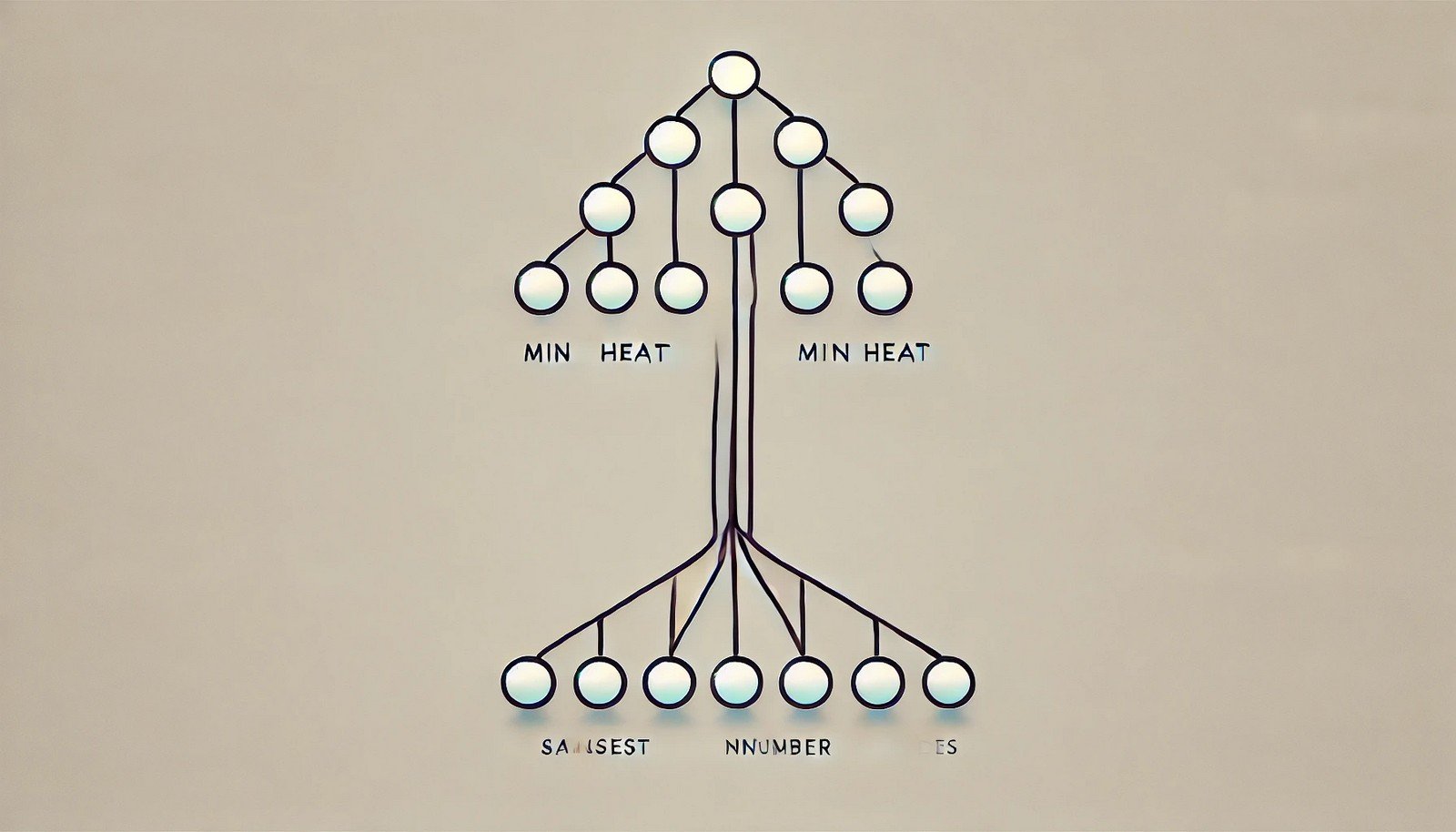Min Heap
 (Representational Image | Source: Dall-E)
(Representational Image | Source: Dall-E)
Quick Navigation:
- Min Heap Definition
- Min Heap Explained Easy
- Min Heap Origin
- Min Heap Etymology
- Min Heap Usage Trends
- Min Heap Usage
- Min Heap Examples in Context
- Min Heap FAQ
- Min Heap Related Words
Min Heap Definition
A min heap is a specialized tree-based data structure where the key at the root is the smallest among all keys in the heap. Each parent node is less than or equal to its child nodes. Min heaps are commonly used in priority queues, heapsort algorithms, and for graph algorithms like Dijkstra’s shortest path.
Min Heap Explained Easy
Imagine a min heap like a playground slide. The smallest number is always at the top, and everything beneath is bigger or equal. It helps computers quickly find the smallest thing in a pile without having to check everything.
Min Heap Origin
Min heaps originate from the concept of binary heaps in computer science. Their formal introduction was tied to improvements in sorting and priority queue algorithms in the 1960s.
Min Heap Etymology
The term "heap" refers to the arrangement of data, while "min" specifies that the smallest element is prioritized.
Min Heap Usage Trends
With the growth of data-driven applications, min heaps are frequently used in real-time systems, networking, and scheduling tasks. Their importance has increased with the rise of algorithms requiring efficient priority management.
Min Heap Usage
- Formal/Technical Tagging:
- Data Structures
- Algorithms
- Computer Science - Typical Collocations:
- "min heap structure"
- "priority queue using min heap"
- "min heap property"
- "min heapify"
Min Heap Examples in Context
- A min heap is used to implement Dijkstra’s algorithm for finding the shortest path in a graph.
- In job scheduling, a min heap ensures that the task with the earliest deadline is processed first.
- Min heaps are key components in memory management systems for efficient allocation.
Min Heap FAQ
- What is a min heap?
A min heap is a binary tree where the smallest element is always at the root. - How does a min heap work?
It maintains the smallest element at the root, with each parent node smaller than its children. - What is the difference between a min heap and a max heap?
A min heap keeps the smallest element at the top, while a max heap prioritizes the largest. - Where are min heaps used?
Min heaps are used in priority queues, heapsort, and graph algorithms. - What is the time complexity of a min heap?
Insertion, deletion, and extraction operations have O(log n) complexity. - How do you create a min heap?
A min heap can be created using an array representation and heapify operations. - Can min heaps handle duplicate values?
Yes, min heaps can contain duplicate values. - What is the heapify process?
Heapify is a process to maintain the heap property by rearranging elements. - How does a min heap improve Dijkstra’s algorithm?
It helps efficiently select the next node with the shortest distance. - What is a Fibonacci heap?
A Fibonacci heap is a variant of the min heap with improved performance for some operations.
Min Heap Related Words
- Categories/Topics:
- Priority Queues
- Sorting Algorithms
- Graph Theory
Did you know?
Min heaps are widely used in database query optimization to quickly retrieve the smallest or highest-priority item from large datasets. This ensures fast query performance.
PicDictionary.com is an online dictionary in pictures. If you have questions or suggestions, please reach out to us on WhatsApp or Twitter.Authors | Arjun Vishnu | @ArjunAndVishnu

I am Vishnu. I like AI, Linux, Single Board Computers, and Cloud Computing. I create the web & video content, and I also write for popular websites.
My younger brother, Arjun handles image & video editing. Together, we run a YouTube Channel that's focused on reviewing gadgets and explaining technology.



Comments powered by CComment